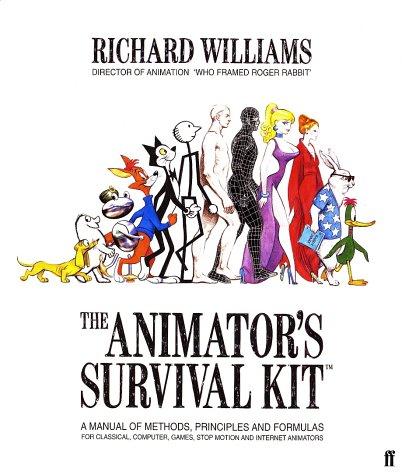
Ian Lloyd《Build Your Own Website The Right Way Using HTML & CSS》
书刊介绍
内容简介
一本给初学者的HTML+CSS 入门书籍
作品目录
Preface
What is a Browser?
Who Should Read This Book
What You’ll Learn from This Book
How You’ll Learn to Build Your Website
HTML, Markup, CSS — Welcome to Your First Bits of Jargon!
Building the Example Site
What This Book Won’t Tell You
What’s in This Book
Where to Find Help
The SitePoint Forums
The Book’s Website
The SitePoint Newsletters
The SitePoint Podcast
Your Feedback
Acknowledgements
Conventions Used in This Book
Markup Samples
Tips, Notes, and Warnings
1. Setting Up Shop
The Basic Tools You Need
Windows Basic Tools
Mac OS X Basic Tools
Beyond the Basic Tools
Windows Tools
Mac OS X Tools
Not Just Text, Text, Text
Windows Tools
Mac OS X Tools
Online Tools
Creating a Spot for Your Website
Windows
Mac OS X
Summary
2. Your First Web Pages
Nice to Meet You, HTML
Anatomy of a Web Page
Viewing the Source
Basic Requirements of a Web Page
The Doctype
The html Element
The head Element
The title Element
meta Elements
Other head Elements
The body Element
The Most Basic Web Page in the World
Headings and Document Hierarchy
Paragraphs
For People Who Love Lists
Commenting Your HTML
Symbols
Diving into Our Website
The Home Page: the Starting Point for All Websites
Splitting Up the Page
Linking Between Our New Pages
The blockquote (Who said that?)
The cite Element
strong and em
Taking a Break
Summary
3. Adding Some Style
What is CSS?
Inline Styles
Adding Inline Styles
The span Element
Embedded Styles
Jargon Break
Why Embedded Styles Are Better Than Inline Styles
External stylesheets
Why External Stylesheets Are Better Than Embedded Styles
Creating an External CSS File
Linking CSS to a Web Page
Starting to Build Our Stylesheet
Stylish Headings
A Mixture of New Styles
A New Look in a Flash!
A Beginner’s Palette of Styling Options
Recap: the Style Story so Far
Looking at Elements in Context
Contextual Selectors
Grouping Styles
Which Rule Wins?
Recapping Our Progress
Styling Links
Class Selectors
Styling Partial Text Using span
Summary
4. Shaping Up Using CSS
Block-level Elements versus Inline Elements
Block-level Elements
Inline Elements
Inline Begets Inline
Inline Elements Can Never Contain Block-level Elements
Styling Inline and Block-level Elements
Sizing Up the Blocks
Setting a Width
Setting a Height
Adding Borders to Block-level Elements
Example Borders
Styling Individual Sides of an Element
Shorthand Border Styles
Border Styles You Can Use
Shaping and Sizing Our Diving Site
Adding Padding
Introducing Padding to the Project Site
Margins
The Box Model
Positioning Elements Anywhere You Like!
Showing the Structure
Absolute Positioning
Other Layout Options
More Absolute Positioning
Relative Positioning
Floated Positioning
Styling Lists
Summary
5. Picture This! Using Images on Your Website
Inline Images
Anatomy of the Image Element
Web Accessibility
JPEG versus GIF versus PNG
Transparency
PNG: King of Transparency
Adding an Image Gallery to the Site
Updating the Navigation
Adding the New Gallery Page
Adding the First Image
Formatting the Picture Using CSS
Captioning the Picture
Basic Image Editing
Image Cropping
Special Effects
Resizing Large Images
Other Software
Filling up the Gallery
Sourcing Images for Your Website
Background Images in CSS
Repeated Patterns
Nonrepeating Images
Shorthand Backgrounds
Fixed Heights and Widths
Setting a Background for Our Navigation
Summary
6. Tables: Tools for Organizing Data
What is a Table?
Anatomy of a Table
Styling the Table
Borders, Spacing, and Alignment
Making Your Tables Accessible
Linearization
summary
Captioning Your Table
Adding an Events Table
Stylish Table Cells
Advanced Tables
Merging Table Cells
Advanced Accessibility
Summary
7. Forms: Interacting with Your Audience
Anatomy of a Form
A Simple Form
The Building Blocks of a Form
The form Element
The fieldset and legend Elements
The label Element
The input Element
The select Element
The textarea Element
Submit Buttons
The Default Control Appearance
Building a Contact Page
Editing the Contact Us Page
Adding a form and a fieldset Element
Styling fieldset and legend with CSS
Adding Text Input Controls
Tidying Up label Elements with CSS
Adding a select Element
Adding a textarea Element
Adding Radio Buttons and Checkboxes
Completing the Form: a Submit Button
Processing the Form
Signing Up for Form Processing
Inserting the Form Code
Feedback By Email
Summary
8. Interacting with Social Media
But Facebook is the Internet, right?
Go Where the Audience Is
A Two-pronged Attack: Facebook and Twitter
Setting Up a Facebook Page
Adding a Like Box to Your Site
Let’s Sprinkle on Some Twitter Glitter
Adding Your Twitter Updates to the Site
Getting a Follow Button
Updating from a Twitter Client on Your Smartphone
But the Page Looks Really Messy Now!
Get Twitter to Update Facebook to Update Your Site
Now the Training Wheels Are Off …
Get Smart!
Summary
9. Launching Your Website
The Client—Server Model
Web Hosting Jargon
Hosting Your Website—Finding Server Space
Free Hosting—with a Catch!
Free Hosting—with a Domain Name at Cost
What is Web Forwarding?
The Downsides of Web Forwarding
Paying for Web Hosting
Hosting Essentials
FTP Access to Your Server
Adequate Storage Space
A Reasonable Bandwidth Allowance
Hosting Nice-to-haves
Email Accounts
Server Side Includes (SSIs)
Support for Scripting Languages and Databases
Pre-flight Check: How Do Your Pages Look in Different Browsers?
Uploading Files to Your Server
FTP Settings
Uploading with FileZilla for Windows
Uploading with Cyberduck—Mac OS X
Other Uploading Tools
Where’s Your Site At?
Checking Links
Validating Your Web Pages
Promoting Your Website
Submit Your Website to Search Engines
Tell Your Friends and Colleagues
Craft an Email Signature with Your Website Details
Post on a Related Forum
Link Exchange
Summary
10. Enhancing the Site with HTML5 and CSS3
HTML5: A Brief History
CSS3 —CSS2 —what’s the difference?
CSS3: Not Yet Universally Supported
The Good News on CSS3
Look at All Those Sharp, Pointy Corners!
The Details in the Shadows
From box-shadow to text-shadow
We Don’t Serve Your Type Around Here!
Other CSS3 Features to be Aware of
IE as a Second-class Citizen
Summary
11. Adding Interactivity with jQuery
JavaScript? jQuery? What’s the difference?
Standard JavaScript versus jQuery: A Simple Example
How do I get jQuery and use it?
Hang On a Moment!
jQuery: Primed and Ready For Action
Using jQuery on the Project Site
Setting Up References to jQuery
Adding Default Form Value
Showing the Picture Gallery’s Captions on Hover
Summary
12. What to Do When Things Go Wrong
Prevention
Keep Multiple Browsers Open While Developing
Validate HTML and CSS as You Go
Learn About Known Browser CSS Bugs
Prepare Your Browser for Battle—with Extensions!
Inspecting Problems with Firebug
Web Developer Toolbar
Disable CSS
Disable JavaScript
Outline Elements on the Page
Hide Images or Reveal alt Attributes
View Information about CSS and JavaScript
And So Much More …
How to use XRAY
Summary
13. Pimp My Site: Cool Stuff You Can Add for Free
Getting the Low-down on Your Visitors
Choosing a Statistics Service
Registering a Google Account
Adding the Statistics Code to Your Web Pages
A Search Tool for Your Site
Searching by Genre
Enhancing Search Further with jQuery
Discussion Forums
Summary
14. Where to Now? What You Could Learn Next
Improving Your HTML
The Official Documentation
Other Useful HTML Resources
Advancing Your CSS Knowledge
The Official Documentation
The Ultimate CSS Reference
HTML Dog
CSS3.info
CSS Discussion Lists
The CSS Discuss List’s Companion Site
Learning JavaScript
Becoming a jQuery Guru
Improving Website Performance
Learning Server-side Programming
Scripting Languages in Brief
Learning PHP
Summary
Index
相关推荐
-

一本书读懂内部审计
《一本书读懂内部审计》内容简介:内部审计工作涉及公司经营的每一个环节,小到一份经济合同、一张财务报表,大到业务流程、部门绩
-

Deborah J·Mayhew《The Usability Engineering Lifecycle》
Acommitmenttousabilityinuserinterfacedesignanddevelopmentoffersenormousbenefits,...
-

秦腔与丝路文化
《秦腔与丝路文化》内容简介:秦腔流传西北大地,展现西部风情,其传播区域叠加于古老的丝绸之路之上,融汇东西文化充分交融的因子
-

《Learning From Data》书籍《Learning From Data》
Machinelearningallowscomputationalsystemstoadaptivelyimprovetheirperformancewith...
-

《The Nature of Computation》书籍《The Nature of Computation》
Computationalcomplexityisoneofthemostbeautifulfieldsofmodernmathematics,anditisi...
-

《社会网络分析》书籍《社会网络分析》
社会网络分析在社会和行为科学巾应用甚广,如经济学、市场营销以及工业工程。社会网络的视角主要关注于社会实体之间的关系。具体
-

生成式人工智能
《生成式人工智能》内容简介:ChatGPT一经问世,在全球范围内引起巨大轰动,GPT-4接入未来办公软件更是让人震惊,而且技术正在以前
-

分配正义新论:人道与公平
《分配正义新论:人道与公平》内容简介:当今的分配正义理论主要是义务论的。这种义务论分配正义理论一方面或多或少受到康德伦理思
-

Peter Norvig《Paradigms of Artificial Intelligence Programming》
ParadigmsofAIProgrammingisthefirsttexttoteachadvancedCommonLisptechniquesintheco...
-

Adobe Illustrator CS5中文版经典教程
Adobe Illustrator CS5中文版经典教程 本书特色 adobe公司推出的权威经典教程畅销全球17年的著名品牌图书在全世界以27种语言火爆发行Ad...
-

赛雷三分钟漫画三国演义3
《赛雷三分钟漫画三国演义3》内容简介:电影式全场景,爆笑还原三国演义!超立体,超生动,超涨知识!《三国演义》可以说是中国较为
-

2015年职称英语考试历年真题详解及全真模拟试卷A级(理工类)
《2015年职称英语考试历年真题详解及全真模拟试卷A级(理工类)》内容简介:人事部组织的全国统一标准的职称英语考试划分为综合、理
-

轮船史
《轮船史》内容简介:本书是由我国著名科技史学者、中科院院士杨槱教授继《帆船史》后的又一本船史图书。杨槱教授长期从事船舶的生
-

《写给大家看的Web设计书》书籍《写给大家看的Web设计书》
RobinWilliams世界著名的设计师、技术专家和畅销书作家。通过写书和授课,她已经影响了整整一代数字设计师。同时,作为Adobe和Ma
-
![[美] 吉姆·克劳斯《设计师摄影指南》](http://oss.shudanhao.com/caiji/chazidian/2023/37402.jpg)
[美] 吉姆·克劳斯《设计师摄影指南》
《设计师摄影指南》是一本“怎样”之书,目的是提高设计师和摄影者的创造能力和技巧与悟性,使设计作品更具独创性。无论你是业余
-

《Spring 2企业应用开发》书籍《Spring 2企业应用开发》
《Spring2企业应用开发》是一部权威的实战指南,由Spring开发团队撰写,全面讲述了Spring2企业应用开发。主要涵盖SpringFramewor
-

国家时代
《国家时代》内容简介:以中国人的语言谱系解析世界文明,看人类国家文明的历史发展逻辑;以世界文明的视野呈现中国文明,在对比中
-

游戏设计:深层设计思想与技巧
《游戏设计:深层设计思想与技巧》内容简介:本书是游戏设计行业的专业书籍,讲述游戏设计的方方面面,从基础的玩法和难度设计(包
-

莫克《高通方程式》
本书讲述了一个来自圣迭戈的小公司如何翻新了无线通信业并带给市场一种全新的体验。这不是一本技术指南,而是一部传奇。读过它,
-

高云《jQuery 技术内幕》
本书首先通过“总体架构”梳理了各个模块的分类、功能和依赖关系,让大家对jQuery的工作原理有大致的印象;进而通过“构造jQuery





